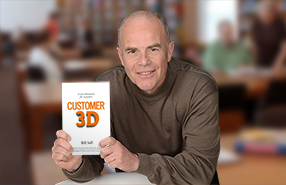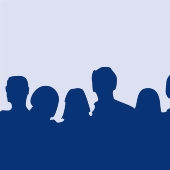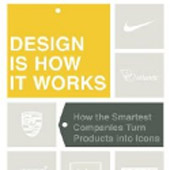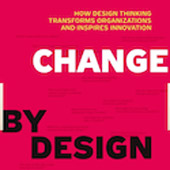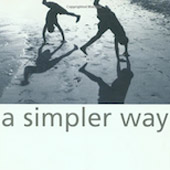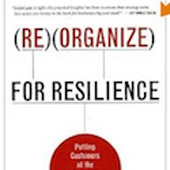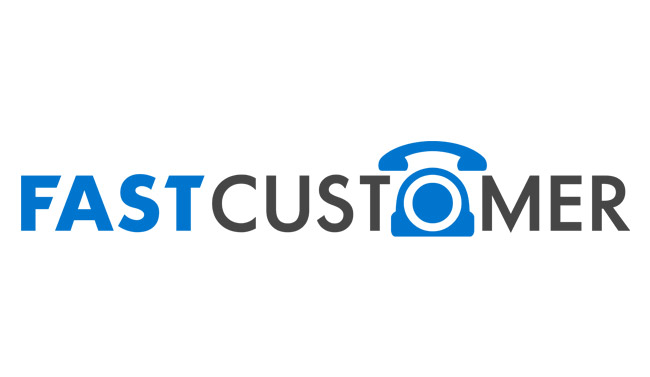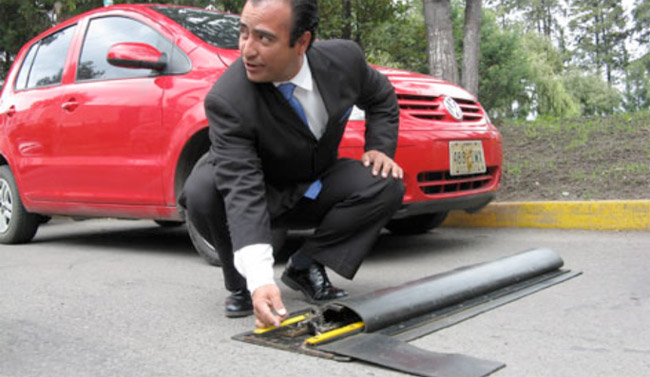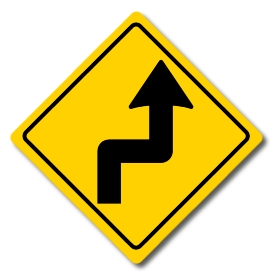thinking like a customer
thinking like a customer
A Different Approach to Customer-Centered Success
This community is very different from any other customer site. The worldview of customers is being re-invented by passionate advocates for changing what has been accepted as normal customer service. This network is a resource, focusing on only the most customer-centered thought leadership. It is meant to showcase abundant, anti-status-quo thinking about mindful, collaborative alignment […]
Read MoreCorporate Follow-Up
I always want to know the back story of feel-good customer service stories.
Recently, a young traveler, with no money, was fed for free by the Wolfgang Puck restaurant in Chicago-O’Hare Airport. It’s a great story.
But I wanted to know how the executives of the organization handled the situation after it happened. I wrote to the Contact Us portal on the Wolfgang Puck website. Here is the response that I received from Lesley within a few minutes of my online request:
Read MoreCustomer-Centered Small Teams
I love it when institutions in traditionally stodgy industries transform themselves into juggernauts of innovation by being human-centered. The Center for Innovation (CFI) at the Mayo Clinic is one really successful example. It started with a small team.
The CFI began by applying an accepted model—testing new drugs in clinical trials—and asking why the same tests could not be done on doctor-patient interactions.
Read MoreRebuttal: Customer Service is the New Marketing
In December, a panel of speakers on customer service topics discussed “Is Customer Service the New Marketing?”. The panel makes the case for marketing how well an organization serves its customers. This is not new. It’s the traditional ideas being warmed over. The panel’s message to organizations is, essentially, don’t change your approach to customer service; simply market it better.
Read MoreFirst Responders
How can first responders, such as Emergency Medical Service (EMS) providers be more customer-centered? Beyond Lucid Technologies has developed the MediView™ Platform to make emergency healthcare and other first response services more efficient. Winner of the 2012 DC to VC award presented by Health 2.0, Beyond Lucid thought like a customer to develop a software […]
Read MoreAdaptability for Customers
Thinking Forward
Steve Jobs once described the difference between TV and the Web as Lean Back vs. Sit Forward media. Today,we have created a world in which access to everything is more direct—news, information searches, etc. From the standpoint of effort we have to put into it, we expect tomorrow's product or process to be easier and more intuitive for us. In this new world order, a Sit Forward organization must have a different metabolism to keep its customers involved.
Read MoreQuestion Everything
Inside Information
When is Self-Service Customer-Centered?
Big Picture or Small Picture?
Big picture thinking provides organizations with the best experience that the “picture” is changing over time. The behaviors of employees (executives and others) have a tremendously better probability of staying ahead of those changes by centering their actions and decisions on the biggest picture of all: customers.
Read MoreFirst or Second?
Which phrase is correct—customers or employees first? When employees know that they can act on behalf of the customer, they are happy and are driven to develop creative ideas that customer will value. The customer comes first, but employees follow along naturally when they have the freedom to do the right thing for those customers.
Read MoreGo Against the Flow
The mindset of many futurists, unfortunately, relies on the tendency to see the future as simply a variation on the present. Today, while most product-centered companies are focused on the limited, “predictable” ways of working for their customers, another movement is emerging — Customer 3D™.
Read MoreImprov for Customers
The lessons of improv comedy for businesses are to allow freedom to explore new areas that will make the connection with customers (or the audience). Instead of being restricted by what you perceive as rules, be open to where your customers want you to go. Be natural, but with a sense of play. Enjoy the freedom to say “yes…and” if the results are better for the customer.
Read MoreForging the Future
Fraunhofer’s website clearly states their motivation: Research that benefits people—that “has a significant impact on people’s lives.” They have developed many products, methods and techniques in the following sectors: Health, Nutrition and Environment Safety and Security; Information and Communication; Transportation and Mobility; Energy and Living; Environmentally friendly production. Here is one example: Before: Research has […]
Read MoreChanging Times
Customer 3D™ is delivering a more customer-centered alternative, in contrast to those organizations who still insist on thinking about customer service as they did years ago. In the 1960's, Bob Dylan wrote and sang, “Your old road is Rapidly agin' (The Times They are A-Changing)” but the message is still true. The future will belong to businesses that are more creative and empathetic than what we have accepted as good enough until now.
Read MoreUndiscussability
Most writers and speakers about customer service are focused on simply describing it, rather than paying attention to how to create the leadership characteristics that they want companies to develop. Their work seems to manifest itself mostly in generalizations and to imply that those generalizations will always work for your organization. Beware of what seem to be shortcuts.
Read MoreMaking a Difference
Customer-centered businesses are empowering their employees to make a difference while they are at work, not just after they leave. If we want to make the world a better place, part of that effort happens when we can create really great new ideas for our customers — ideas that make people more productive.
Read MoreLet’s See How You Post-it
In 1974, Art Fry was wondering how to keep the bookmarks in place in his hymnal when he remembered the adhesive Dr. Spencer Silver made. After making a few samples and distributing them to his colleagues, Fry found his sticky bookmarks being used as notes, and everyone wanted more samples. Benefit to the […]
Read MoreThe Customer 3D™ Premium
All of us are well aware that basic knowledge is getting more basic, because it is more easily accessible. Google and other high-performance search engines have proven that. Customer 3D™ organizations are factoring this trend into the design of their services in order to creatively grow their businesses. It’s happening at two ends of the […]
Read MoreQuarter-Inch Holes (vs. Quarter-Inch Drill Bits)
Professor Theodore (Ted) Levitt deserves the first entry in the Thinking-Like-a-Customer Ideas—Classic version. In The Marketing Imagination, 1983, Levitt asserted that people don’t buy things but, instead, buy solutions to problems. He called it a “leap from the obvious to the meaningful.” One of his memorable examples referred to Leo McGinneva’s quote about why people […]
Read MoreRe-Defining Customer Service
Practical Wisdom
A Simpler Way
Thinking Forward: Adapting to a Changing Workplace
Bill Self Presenting at a Manufacturing Association Meeting
Do You Hate Waiting on Hold?
Smart Speed Bumps
Fashionably Safe
Beyond Lagniappes
Lagniappes are fine, but we can't stop there. Customer 3D organizations operate in a different dimension: one in which unexpected thank-you’s are a given. These organizations are treating their customers as equals and proactively designing new services that anticipate customer needs in addition to token gifts.
Read MoreWhat Needs Changed?
Customer 3D is a new way of thinking and working for customers worldwide. It is a new dimension of performance for customers that only a few exceptional organizations have figured out. It shows the elements that other organizations can use to operate in this new dimension with more humanity. It is a model that is proactive. It is a strategy in which the first priority is customer success.
Read MoreBecoming Customer-Centered
Relevance for Customers
Organizations that become the “go-to” companies for information and expertise that their customers value are superseding the transaction-based model of customer connections by creating a network effect that is now far more important. That is the space which future customer loyalty will occupy.
Read MoreCustomer 3D Creates ‘Us’ Thinking
Customer 3D and Disappearing Problems
A 3D Look Into the Future
The Customer 3D™ system approaches the future the way the design thinkers do. Customer-centered champions recognize that solutions are simply better iterations of today’s reality; but they also understand that even better models can be found by continuing to experiment with new approaches that will add even greater value in the future.
Read MoreCustomer 3D™ Collaboration
Pretending to be Customer-Centered
Not Questioning Enough
Companies must open windows to new service design ideas in an effort to connect with customers. Leaders in high-performing organizations must aggressively question “not broken” processes that appear to be “working” in order to discover how they can be further improved. Today’s approach to customer relations has to go beyond an “absence of problems” mentality to embrace innovation in order to stay ahead of the competition.
Read MoreThe Future is Arriving
In every industry, there are exceptional performers that don’t have to look for customers. Instead, they draw them in by defining the future that these devotees want to be shown. Rather than trying to perfect what is already being done, Customer 3D companies question what is not being said and then go after that new dimension.
Read MoreUnfinished Business
Customer3D™ Capacity to Do More
Enthusiasm for Customers
Black Friday Revisited
Black Friday techniques are built on short-term tactics that primarily benefit the seller. A customer-centered mindset thinks differently. It focuses on long-term connections that are grounded in making customers more committed to maintaining a strong relationship with their suppliers.
Read MoreCustomer 3D Progress
Units of Measure
Customer Expectations
Uncopyable
The Time Spent on Customers
Customer 3D™ Action Verbs
“The future of search is verbs.” Bill Gates made this comment to Esther Dyson to describe the transition to a new mindset, in which, as the world becomes more familiar with high-powered search engines, people “aren’t looking for nouns or information; they are looking for action.” (quoted in Curation Nation). The same concept is true […]
Read MoreThe Energy of Customer 3D™
The Customer 3D™ Team
A Lot of People Can Sing…
But we don’t pay attention until they are really good. Exceptionally customer-centered organizations have an energy that attracts faithful customers who have noticed what makes them different and rewarded them with go-nowhere-else loyalty. Customers show up because of the company and the product is no longer part of the decision. They already know the product is going to be good.
Read MoreCustomer-Centric Wellness
Customer-centricity is an attitude, which can be compared with a company's wellness program. It is an effort that will bring about positive change in employees and elevate their confidence to take care of customer needs. It also becomes the foundation of better overall health for the organization.
Read MoreDouble Opportunities
Re-Thinking Value
Resourceful Leadership
Customer Maturity: A New Definition
Immunity to Change
Customer-centricity will create a new dimension of success that many companies cannot picture because they are being held back by their assumptions. The journey starts with the realization that success will come when a different organizational culture is in place and that it is worth the effort to change.
Read MoreWhat Will Be Different?
Missing the Obvious
The Customer’s Customer
Remastering
Changing the Culture
Customers’ Perceptions of You
Superficial Relationships
Customer Effort
A great measure of an organization’s focus on customer success is how customers perceive their Return on Effort. High-performing companies are always searching for ways to design more user-friendly processes. This goal of reducing customer effort can best be achieved in a “question-everything” organizational culture.
Read MoreCustomer by Committee
Sharing with Customers
Linear Thinking for Customers Won’t Succeed
Growing Customer-Centricity
How to Eliminate Customer Boundaries
The Milkshake Mistakes
What Does WOW Mean?
Making Sense to Customers
Visual Thinking
Getting Past Task-Oriented Behavior
The First Day of School
Customer Focus Leads to Personal Elevation
Positive Customer Conditioning
Creativity Focused on Customers
Customers Who Tolerate Us
Customer-Centricity: Two Meanings
Running to Stand Still
Lessons from Frank Lloyd Wright
Frank Lloyd Wright believed that buildings (like customer-centric companies) should fit into their environments, rather than the other way around. Wright said, “No house should ever be on a hill or on anything. It should be of the hill--belonging to it. Hill and house should live together each the happier for the other.”
Read MoreDon’t Paint by the Numbers
Customer Myopia
Most supplier-centric organizations rationalize that they know what customers need. What these companies perceive to be needs fall far short of what customers want. Customer-centric organizations look for new opportunities to offer to their customers, rather than waiting for them to be asked for.
Read MoreCustomer Emergence
No Limits
There are so many opportunities to develop cool, new ideas for our customers, but most organizations have limited their vision to the traditional view of the industry they are in. The best opportunities for no-limit ideas originate in completely different disciplines which provide new freedom and creativity if viewed through the lens of the customer.
Read MoreAnti-Complexity Officer
Customer-Centered Systems
The Pronoun Test
Transforming Your Customers
Art or Science?
Viewing Jobs Differently
Two Ways to Innovate
Innovation happens when organizations think like their customers. The approach should be built on the goal of making the exception the rule. Organizations should constantly be looking for a better way to accomplish what they are doing. And it should always be based on the real-world needs of the customer.
Read MoreHigh Amplitude
The power of customer-centricity is strongest at Levels 2 and 3, which create a balanced system that permeates the internal silos that exist in most businesses. These high-level, customer-centered strategies produce higher loyalty and customer closeness in organizations that embrace them.
Read MoreWhat’s Missing?
Change Needs Creative Ideas
Beautiful Evidence
The Customer-Centric Index™ measures closeness with external customers and strength of relationships with internal customers. It's geared to focus on silo-busting. It's systematic and consists of highly-specific measures of the behaviors that experience has shown will make organizations more customer-centric.
Read MoreCan We Prove Customer-Centered Is Better?
Why should any supplier-centric organization switch to being customer-centric? It’s not difficult to imagine the arguments against the change: “Customer-centricity is an abstract idea. It involves a culture change. We prefer pragmatic results to ideology. Show us the benefits.”
Here's a look at the "Why" of customer-centricity.
Read MoreKeeping Customers
Keeping Pace with Customers
Make sure that your organization is prepared for change by putting some customer-centered monitors in place that will condition everyone to look for new ways by questioning the old ways. Set up a process to evaluate change on customers’ terms, not yours. It will be a great platform to start discussions of ways to strengthen your organization by consistently looking for ways to outperform.
Read MoreDiscovering a Better Way for Your Customers
Creating Customer-Centered Ideas
Our success in generating innovative customer-centered thinking becomes stronger when our "ability to make new combinations is heightened by our ability to see relationships.” As in a kaleidoscope. new patterns develop and create exciting combinations when the variety of experiences that our teams bring to the search lead to fresher ideas within our organizations.
Read MoreIs Engagement the Answer?
The Best Fit with Your Customers
Value equates to how the individual customer feels about doing business with you. It is your “fit” with their needs and it is embodied in an emotional connection. Execution involves deep understanding and a high degree of flexibility because “fit” is judged by your delivery in its broadest, most proactive, sense.
Read MoreUnmet Customer Needs
Customer-Centered Decision Trees
Never Stand Still
Three Levels of Customer Purpose
Timeless Customer Connections
A Time for Reflection
The Impossibility Question
Instilling customer-centricity into your organization’s culture is not impossible, of course. But questioning works better than telling when you have a challenge to overcome. It creates buy-in when the team with whom you are working figures out how to approach the goal more realistically.
Read MoreGetting Customers to Trust You
Customer Creativity
The Soul of the Customer
Lower Your Risk by Getting Close to Your Customers
Customer Complacency
The status quo is a funny concept. It is comforting and familiar, of course. In many cases, unfortunately, we are lulled into accepting what exists today and not realizing how much better it could be. We don't need to change the status quo every time. However, we need to challenge the status quo every time. […]
Read MoreCustomers Want Simplicity
Customer-Centric Managers
A few passionate managers can change the culture in an organization by leading their team toward customer-centricity. Executive leadership must set the tone and direction for customer-centricity. But middle managers are in the best position to know when to take off the training wheels and make change happen.
Read MoreHyper-Loyalty
Why are there organizations with customers that are "off the charts" in their loyalty? Customer-centricity creates a symbiotic relationship with customers. Hyper-loyal customers have a passion for converting others to become members of their "club" so that others can have the same great experiences.
Read MoreCustomer-Centric Problem Handling
Research which we do for our clients indicates time and time again that customers who reported a problem and were delighted with the outcome have higher satisfaction than the ones who never experienced a problem at all. Why would any company simply want to break-even with these opportunities? Service recovery should energize the organization to become more customer-centered.
Read MoreAn Early Warning System
“There’s no such thing as good news or bad news. There’s only fast news and slow news.” Fast knowledge happens within organizations that are connected and proactively communicating with their customers. Every organization should have an early warning system. The best one is built around closeness with your customers.
Read MoreA New Approach to Customer-Centricity
Customer Certainty
How to Answer Questions
Amazon.com continues to be a successful, strong brand because it always answers its business questions—strategic and day-to-day—with a solution that includes “the customer.” Jeff Bezos, Amazon's CEO, has given the world insight into how he leads the Amazon organization through a series of interviews over the years. I believe the best is “The Institutional Yes” […]
Read MoreEducated Customers
The organizations that will survive and thrive five years from now are the ones that have educated customers. That's because smart customers will remain loyal to suppliers that deliver high value. This value goes far beyond a generic product or service. It educates its customers as part of the relationship. Customer-centered suppliers understand this as […]
Read MoreTells
Tells are indicators of what others see in you—how you will behave in any situation. Customers use all of your interactions with them to form an impression of how you will treat them as customers in the future. It is really important to understand these tells and to manage them deliberately because customers judge your […]
Read MoreI Know All the Right Answers
Much of our client work involves assisting leaders in developing their organizations to become more customer-centered. But what if the leaders don't get it? What if they think they know all the right answers about customers already? A phrase that you hear a lot these days is "They don't know what they don't know". I […]
Read MoreExtraordinary
There is a simple method for outperforming and growing your business. It involves what author Jim Champy describes as "finding something that you can do better than your competitors." Every process that touches your customers represents an opportunity to distinguish your organization as better in the eyes of your customers. Here's how you can identify […]
Read MoreThe Multiplier Effect (Part II)
It is fantastic news that great performance, grounded in being customer-centered, is available for every business if it wants it. It grows out of deliberate practice and design of an organization-wide culture to improve on behalf of your customers. There is another dimension of the multiplier effect that will add even more to your image […]
Read MoreThe Multiplier Effect (Part I)
The more you do something, the better you get at it. We are familiar with this concept in sports and music, because the more you practice, the better you become. The same thing applies in leading your organization to become more customer-centered. In economics, a multiplier effect describes the degree of change in one variable […]
Read MoreGreatness Without Customers?
It's amazing how organizations believe they can become great while ignoring their customers. Jim Collins' How The Mighty Fall: And Why Some Companies Never Give In builds off of his Good to Great and Built to Last tenets to analyze how successful companies get better, or conversely, how they decline. He describes how companies can under-perform by […]
Read MoreChange We Can Believe In
I love it when people shake up the way we think. That is what we need in order to stay competitive in today's business environment. A growing number of new thought leaders are helping us to understand that the best approach to bringing about positive change is to structure our actions around being customer-centered. Pip […]
Read MoreRight-Brain Business Goals (II)
Right-brain thinking will not take you to the next level without distinct business goals. The right-brain approach has always been a metaphor for intuitive, innovative, big-picture decision-making. With specific goals, this underutilized perspective will accelerate your business growth and customer commitment. Every successful organization needs specific customer-centered goals. These go far beyond narrowly thinking of […]
Read MoreRight-Brain Business Goals (I)
Much has been written recently about right-brain thinking—and it is long overdue. Business has traditionally been left-brained, but its ability to search for greater efficiencies and to innovate while lowering costs has reached a plateau. The new opportunity to take performance to the next level is through right-brain thinking. A shift to this approach signifies […]
Read MoreDesigning a Better Future
When I conduct client workshops I often ask participants this question: What could your competitors be developing for your customers right now that you don't currently offer? We know it is impossible to draw an accurate picture of the future. As Yogi Berra said, "It's tough to make predictions, especially about the future." But we continue […]
Read MoreThe Last Question First
Alan Webber's Rules of Thumb is an absolute must-read. It is quintessential to leading your organization through the next day, week, year and beyond. It is game-changing, but simple. It is practical and inspiring at the same time. And it weighs in solidly on thinking like a customer. For example, Webber's Rule #3 is ‘Ask the […]
Read MoreBe Notable
The greatest challenge of escaping the sameness of your product or service is to stay ahead of what your direct competition offers. Adjust the space that you operate in. That is, design and sustain a service that is truly different from the rest of your market segment. The key, of course, is to make certain […]
Read MoreLoyalty Programs are Changing
Last week, I attended the Loyalty Expo, a showcase of the prominent suppliers using incentive rewards programs to drive their business growth. The good news is that some of the companies that are using these points programs are looking at new ways to drive loyalty by becoming more relevant and customer-centered. The old models are […]
Read MoreContext is a Big Advantage (Part II)
Here's the reason that you want context from your customers: There is no greater source of new opportunities. Forget what you thought you knew about being customer-focused. The new business model is built around a culture in which employees, as Dev Patnaik says, "possess a shared and intuitive vibe...that helps them see new opportunities faster […]
Read MoreContext is a Big Advantage (Part I)
We have all experienced the paradox that "the more successful a company becomes, the more likely it is to become removed from customer segments." (The Open-Empathy Organization, Dev Patnaik and Peter Mortensen, from Rotman Magazine, Spring 2009). If the phrase "taken out of context" has negative overtones (as it should) of misquoting, bad information and […]
Read MoreThe Age of Engage
The next great opportunity to drive customer closeness is optimizing the recognition of your most loyal customers. We live in the "age of engage", so success depends on developing an individualized relationship with important upper tier clients and an environment that encourages outstanding performance for this key subgroup of very committed customers. Ask yourself this […]
Read MoreBranding Your Outperformism
The new competitive advantage is in outperformism, built around delivering the passion in your organization for being customer-centered. Because that fresh way of thinking is really, really valuable today, it should be viewed as your new brand. The old paradigm was to brand your product, then throw in your customer-centered behavior as icing on the […]
Read MoreOutperformism
Outperformism is what successful organizations must do to differentiate their products and services and keep their competitive advantage. This level of performance only occurs when a company implements a structured system to proactively exceed the expectations of its customers. It is borrowed from the term ‘outperform' for a rating which a stock analyst might give […]
Read MoreCustomer-Centric Management is Non-Traditional
Much has been written about the successful partnership model epitomized by Procter & Gamble and Wal-Mart in a landmark collaboration started 20 years ago. However, in addition to the Information Technology and supply chain synergies that developed, the even greater lesson to be learned is that being customer-centric involves changing your organization chart in terms […]
Read MoreThe Quiet Revolution
Many well-intentioned companies tell us that they want to exceed our expectations. Unfortunately, in many cases, we are used to "unexpected" service at the transactional level, when, for example, an employee from a business provides us with great service. Now, what was once unexpected has become simply table stakes in the drive to differentiate your organization […]
Read MoreCustomer-Centered Strategy
What if you developed a specific strategy that focused your organization on becoming more customer-centered? It would take your organization to a new dimension, where you will outperform your competitors in the eyes of your customers. Most companies tell themselves that their strategy is to make profits or maximize return to their shareholders. This is not a […]
Read MoreDesignfulness
Customer Excellence as a Way of Life
Successful companies have an excellence quotient that they never compromise. The secret, however, is not in products and marketing. The secret is in creating this excellence from the viewpoint of the customer, because that is who will ultimately be the judge of whether they deserve that high status. The secret is in becoming customer-centered. One […]
Read MoreShort-Term Thinking
Short-term thinking has plagued businesses for years, but in today's economic conditions, it is even more dangerous. Now is the time for change, not to stand still. Organizations in a survival mode resort to quick fixes such as downsizing and postponing expenses. Their leaders don't realize that they cannot recycle the ideas of the past […]
Read MoreCustomer-Centric Accelerator
Becoming customer-centric is transformational and it requires a change in culture as well as in process design. It demands a long-term commitment that involves everyone in your organization. However, there is one proven method to jump-start the process in a way that will accelerate the company-wide commitment to the journey. The graphic with this article […]
Read MoreThe Potential Product
Everything-products or services-can be enhanced to perform better than it does today. Rather than thinking about what the service currently looks like, envision what it can be in the future. The secret is to approach it from the user's viewpoint--by thinking like a customer. Harvard professor Ted Levitt defined this development process 40 years ago […]
Read MoreThe Benefits of Being Customer-Centric
Being customer-centric is the best way to supercharge your organization. When I present to audiences about thinking like a customer, they all say they want to become more customer-centric. However, few of them can really articulate WHY they want to become that way. Let's explore the benefits of transitioning your organization to becoming more customer-centric. […]
Read MoreThe Most Important Question
The most important question that every organization must answer is "Exactly how is the customer changing?" Adrian Slywotzky and David Morrison, in The Profit Zone: How Strategic Business Design Will Lead You to Tomorrow's Profits, challenged businesses: "To create a strategic and dynamic perspective on the customer, one must have a clear and compelling point of […]
Read MoreGreat Performances
When you go out to a show or another event, you expect a great performance. What makes you think your customers don't expect that from you every day? My wife and I enjoyed a 7-day cruise recently. Part of the entertainment consisted of performances by the Second City Comedy Group. In addition to rehearsed sketches, […]
Read MoreSatisfactionable
Why do satisfaction surveys have such a bad name? Because very little is ever done with the majority of them. And why is nothing done with them? Because the results are not actionable. Larry Bossidy in Confronting Reality: Doing What Matters to Get Things Right warns against shallow, "one-size-fits-all" surveys that are typically designed by the […]
Read MoreHeliotrophy
Can I Have Your Customers?
If a competitor asked you this question, your emphatic answer would be "No Way!" Customers are assets. You wouldn't give up your computers or manufacturing equipment, would you? Well, now is the optimum time to upgrade your strategy with a serious focus on thinking like your customers. In these severe economic times, the competition is […]
Read MoreWinning Streaks
It seems that in the 21st century, we are fascinated by winning streaks in business. In the same way in which we admire teams or individuals that can dominate their sports, we look up to companies who have had long-term success. However, recognizing these winning streaks is much easier than understanding how they become a […]
Read MoreA Well-Defined Future
Organizations will not be successful by making old ways more efficient. The competitive environment is changing so rapidly that a lean cost structure is no longer a differentiator. Instead, the advantage going forward will go to the companies that can develop a solidly different vision that tests their decisions based on what is best for […]
Read MoreOutside-Inside
Your customers, by definition, are outside the "four walls" of your organization. Progressive, successful organizations, however, look for opportunities to invite customers to participate in their internal activities. It is a remarkable way to clearly validate customer-focus to all of your employees. It is also a way to inject new thinking that otherwise may not […]
Read MoreThe Year of the Customer
As we are about to begin a new year, please let me assure you that I am just kidding with the title of this post. Isn't it somewhat presumptuous to announce just one year for customers, when every day and every year should be devoted to them? It also makes you wonder what the other years […]
Read MoreHow Did You Do It?
Every company during the holidays will be reaching out to its customers and thanking them for the relationship they have had during the year. At this thoughtful time of the year, it is valuable to take a true assessment of your success. But as you reflect on what you have accomplished in the year, it […]
Read MoreCreating Customer Mindshare
Thinking like a customer is unselfish. Barlean's CIO, Jade Beutler, describes his organization's efforts as "making things intuitive for consumers." But unselfish acts also pay off in ways that benefit us, as we all know. Barlean's is a Ferndale, Washington-based seller of organic nutritional products, such as fish oils and flax seed. They were founded […]
Read MoreMake Good News Better
Great organizations are always inventing new ways to make customers' experiences more valuable. South African Airways focuses on higher performance by looking at each element of its service from the customer's viewpoint. For example, SAA prints letters from its customers with compliments or questions in its in-flight magazine, Sawubona. Not unusual. However, it answers each […]
Read MoreThat Sounds Familiar
Technology is advancing so quickly that there is a risk customers will not accept it or, at least, not like it. My wife and I were in a casino recently playing the slot machines for fun (certainly not for profit!). The devices, of course, were electronic and took cash, magnetic cards or casino-approved receipts in […]
Read MoreCustomer Details
Customer focus does not happen offhandedly. It requires leadership and emphasis on details to stay effective. Many organizations fail or drift because they believe it is easy, they take it for granted and they don't deliver the concentrated efforts needed to be successful. Donald Keough, who was President and COO of Coca-Cola Company at the […]
Read MoreWhat Can Your Customers Accomplish?
There's a difference between providing your customers only with the product or service that they expect and helping them achieve what they care about. How would it feel to offer your customers something that didn't cost you anything, but that delivered to them a powerful sense of accomplishment? CP Rochester in Rochester, NY knows all […]
Read MoreThe Meaning of Loyalty
A New Word
Sometimes you need to invent a word to describe something that has not actually been well-defined before. Sometimes you need to invent a word to describe something that you really care about. I had the great fortune to meet a team leader in the service industry recently at her job. She was the perfect combination […]
Read MoreInspire Your Customers
It is much better to have inspired customers than simply satisfied ones. Metroparks of the Toledo (OH) Area understands this relationship with its customers extremely well. It has a Board of Directors' mandate to preserve land, so if the organization has $1 left to spend, that's where it is invested. Yet customers may not always […]
Read MoreThe Seventh Hat: For Customers
Dr. Edward de Bono is renowned for his groundbreaking work in lateral thinking and systems for generating ideas. In his book Six Thinking Hats (Little, Brown and Company, copyright 1985, 1999 by MICA Management Resources, Inc.) he describes a technique for channeling thoughts about a problem or improvement opportunity by putting on one of six […]
Read MoreCustomer-Centric Efficiencies
Every city's telephone book has a page of local government departments and agencies. It's usually in a different page color so that it can be found easily. It is also full of dozens, maybe even hundreds, of listings--a fact that makes it frustrating and intimidating for the citizen attempting to make the call. Why do […]
Read MoreCustomer Camaraderie
When customers are suffering though really poor performance from an organization from whom they are buying a service, it unites them in a unique kind of camaraderie. Today is the six-month anniversary of the US Airways incident described in my October 8th post. This article is a tribute to Sonita, Marty, Evan, Samuel and […]
Read MoreSeamless Customer Care
Mercedes-Benz has a captivating ad that says "Most people will never need ____, but we build it in anyway". The company inserts various features in the tagline, identifying aspects of their cars that differentiate them. This phrase also illustrates a fundamental concept for all organizations that want to outperform for their customers: Make sure that […]
Read MoreCreating Customer Closeness
Is there anything better than something that helps your customer and brings you more business at the same time? Probably not. The National Parks Service passport program is a great example. It was created in 1986 to promote the national parks and is currently operated by Eastern National to “promote the public’s understanding and support […]
Read MoreAbundance Gaps
In the book Making the Impossible Possible, Kim Cameron and Marc Lavine define an abundance gap. It is an elegant concept that fits perfectly in describing how to take care of customers. There is often a disconnect between what customers want and what organizations choose to give them. Most companies believe that if they eliminate […]
Read MoreClever is Better
I discovered this “Do Not Disturb” hanger in the Rosebank Hotel in Johannesburg recently. I have told several people because of its uniqueness. The phrase, “(Unless you’re from the lotto prize committee)” makes you stop, think, (and smile). It indicates that the hotel’s marketing department took the time to improve an item that, frankly, is […]
Read MoreI’d Rather Fight than Switch
Remember the newspaper and television ads from the Sixties that showed a smoker with a black eye (obviously put on with makeup) who was determined to keep his brand of cigarettes, even if he had to fight for them? Do you remember the name of the cigarette? (Tareyton) These ads, which ran from 1963 through […]
Read More
